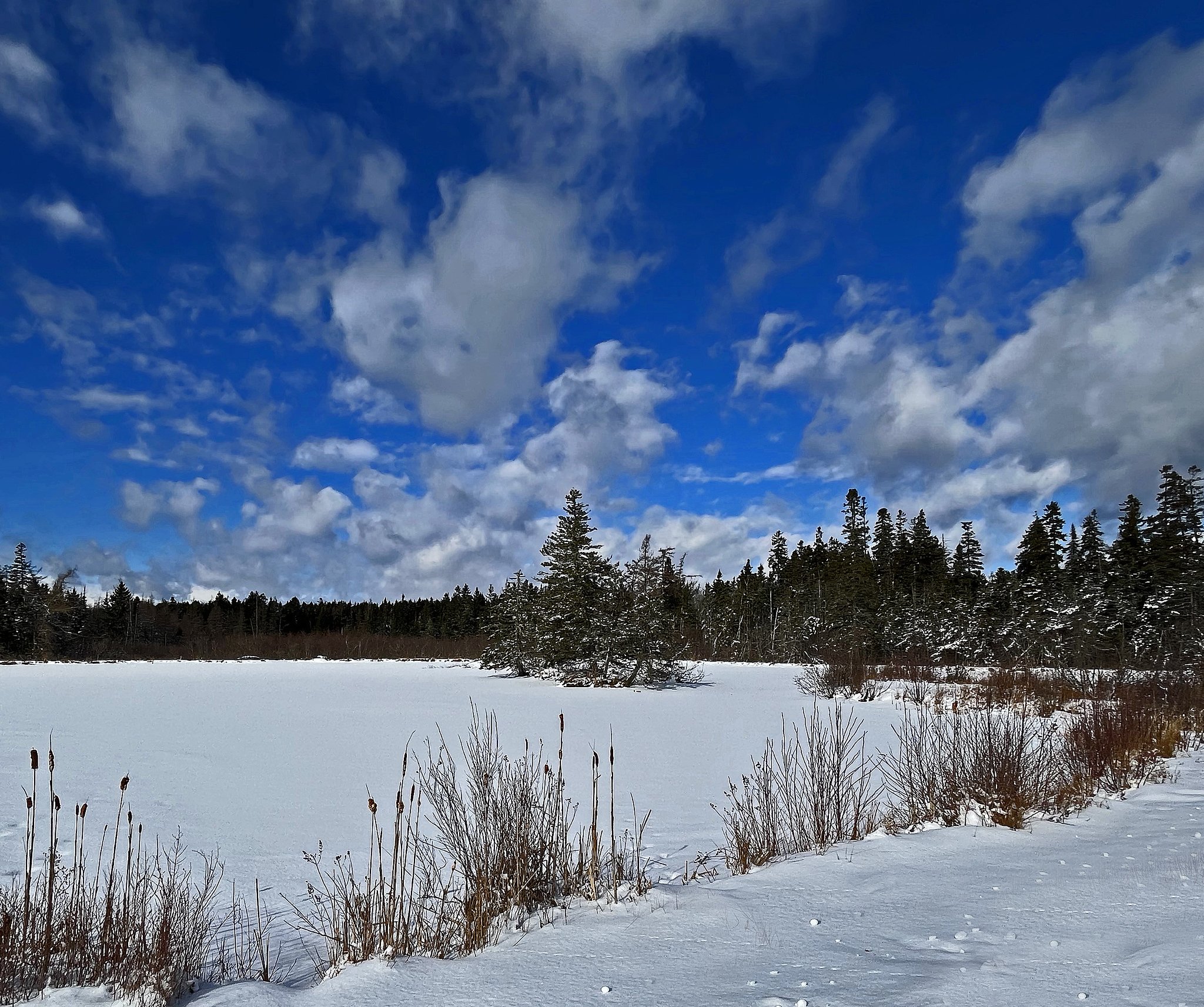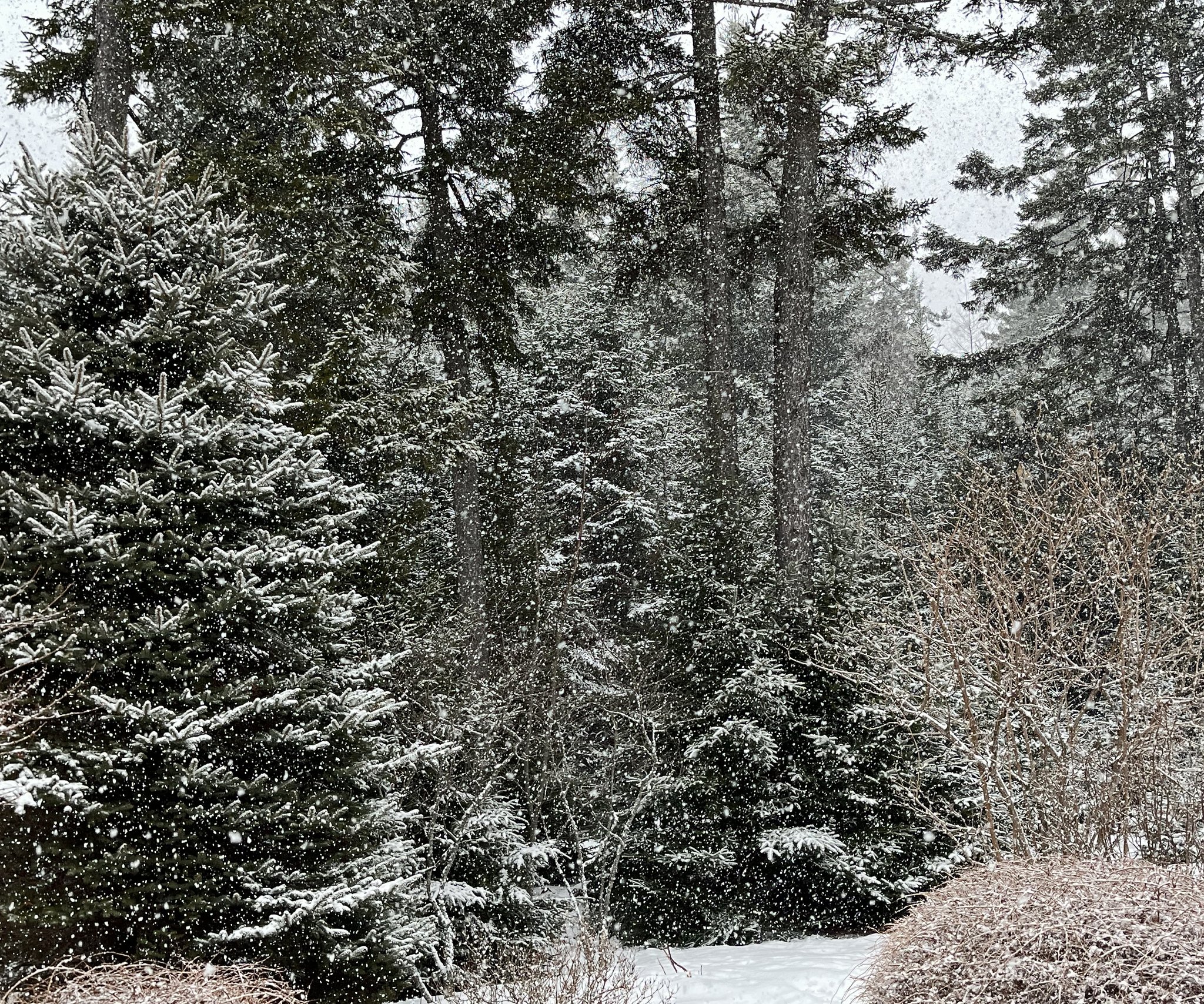It’s foggy, windy, rainy, and cozy-warm for early March (45°F) as I write this morning. It has been that way since yesterday, when the images posted here were taken. We seem to be in the first major battle of seasons between the occupying forces of winter and the invading forces of spring. The sea ice has been unable to maintain its line of defense in many areas and the accumulated ground snow is in full retreat
Above, you see the ice in Patten Bay separating and drifting out yesterday. Below, you’ll see that most of the snow on Harbor Island was disappearing fast in the rain and warmth yesterday and probably is virtually all gone as I write here:
Of course, we dare not get optimistic. Local history shows that there always is a possibility of a spring blizzard or ice storm after a March thaw. (Images taken in Surry and Brooklin, Maine, on March 5, 2025.)





































































































